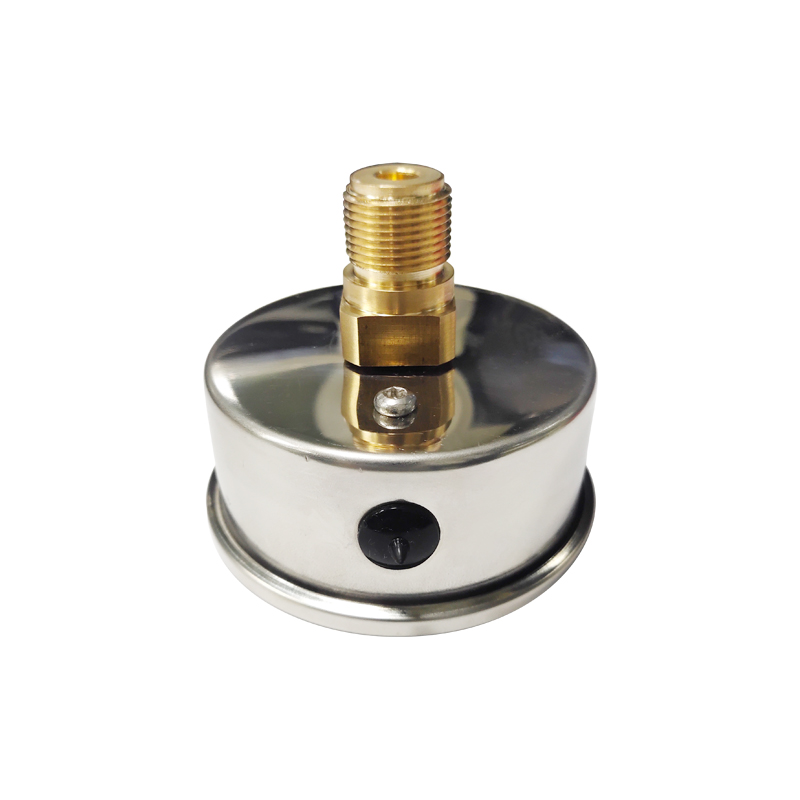
Dic . 26, 2024 10:55 Back to list
static pressure differential pressure gauge jah
Understanding Static and Differential Pressure with Differential Pressure Gauges
In various industrial applications, the measurement and monitoring of pressure is critical to the efficiency, safety, and functionality of processes. One significant instrument used in this realm is the differential pressure gauge. Specifically, understanding the concepts of static pressure and differential pressure is vital for the effective utilization of these instruments.
What is Static Pressure?
Static pressure refers to the pressure exerted by a fluid at rest. In systems like pipelines, ducts, or tanks, static pressure is the measurement of the force exerted by the fluid within the system when there is no fluid movement. It is influenced by factors such as the height of the fluid column, the density of the fluid, and atmospheric pressure. Understanding static pressure is essential because it provides baseline data necessary for further calculations and operational decisions.
What is Differential Pressure?
Differential pressure, on the other hand, measures the difference in pressure between two points within a system. This kind of measurement can be critical for various applications, including flow measurement, filter monitoring, and detecting blockages or leaks within systems. Differential pressure gauges are specifically designed to monitor this pressure difference, providing valuable insights into the operational status of equipment.
How Differential Pressure Gauges Work
Differential pressure gauges operate by using two pressure sensing points. One point measures the pressure of the fluid in the system, while the other measures the pressure of the environment or another reference point. The gauge then calculates the difference between these two pressures, providing a reading that indicates whether the pressure is increasing, decreasing, or stable.
static pressure differential pressure gauge jah

These gauges can take various forms, including mechanical (bourdon tube, diaphragm) or electronic types (strain gauge, capacitive type). The choice of gauge type can depend on the specific requirements of the application, such as the range of pressure to be measured, the type of fluid, and environmental conditions.
Applications of Differential Pressure Gauges
Differential pressure gauges find applications across various industries. In HVAC systems, they are used to monitor the pressure drop across filters, ensuring that they are not becoming clogged. This capability helps maintain optimal airflow and energy efficiency, ultimately enhancing system performance.
In the chemical and pharmaceutical industries, accurate pressure measurement is critical for maintaining reaction conditions. Differential pressure gauges help monitor the pressure difference across reactors, providing essential data that can influence product quality and safety.
Moreover, in fluid transport systems, monitoring differential pressure can help identify potential leaks or blockages, thereby preventing costly downtimes and ensuring the integrity of the overall system.
Conclusion
The interplay between static pressure and differential pressure is crucial for the effective operation of many industrial systems. Differential pressure gauges provide a reliable means of measuring these pressures, which is essential for the diagnosis and troubleshooting of fluid systems. By employing these gauges effectively, industries can enhance operational efficiency, maintain safety standards, and ensure optimal performance throughout their processes.
As technology continues to advance, the design and functionality of differential pressure gauges will likely evolve, offering even more precise and reliable measurements critical to industrial applications worldwide. Understanding these concepts ensures that operators and engineers can select and utilize the right tools for their specific needs, thus driving innovation and efficiency in their fields.
-
High-Precision 5 Valve Manifold Differential Pressure Gauge Suppliers
NewsApr.29,2025
-
High-Precision Diaphragm Vacuum Pressure Gauges Manufacturers & Quotes
NewsApr.29,2025
-
Omega Differential Pressure Gauges High Accuracy & Durability
NewsApr.28,2025
-
Low Pressure Differential Pressure Gauges Precision Solutions & Quotes
NewsApr.28,2025
-
Digital Diaphragm Pressure Gaauge Precision Measurement & OEM Quotes
NewsApr.28,2025
-
Differential Pressure Gauge China Price High-Accuracy & Best Quotes
NewsApr.28,2025
